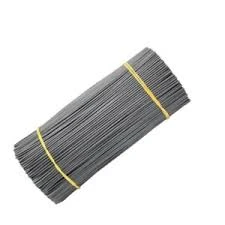barbed wire fence installation
Guide to Installing a Barbed Wire Fence
Barbed wire fences are a popular choice for agricultural, security, and boundary purposes due to their durability and effectiveness. Whether you’re looking to protect livestock, mark property lines, or deter intruders, a properly installed barbed wire fence can serve your needs. This guide outlines the essential steps to install a barbed wire fence effectively.
Materials Needed
Before starting your installation, gather the necessary materials. You will need
1. Barbed wire 2. Fence posts (wood or metal) 3. Concrete (optional for setting posts) 4. Fence staples or tie wire 5. Post driver or digger 6. Wire cutters 7. Tensioning tool 8. Level 9. Measuring tape 10. Safety gear (gloves and goggles)
Planning and Preparation
The first step in installation is careful planning. Decide the perimeter of the area you want to enclose or mark. Use stakes and string to outline the fence line. Ensure that the spacing between the posts is around 10 to 12 feet, depending on the terrain. Check local regulations to ensure compliance with any building codes or zoning laws regarding fence height and placement.
Layout and Digging Post Holes
Once the layout is established, it’s time to dig the post holes. The depth of these holes should be at least one-third of the height of the posts above ground, usually around 2-3 feet. Ensure that the holes are wide enough to accommodate the post base. If you’re using wooden posts, treat them with a preservative to prolong their lifespan.
barbed wire fence installation

Setting the Posts
Insert the fence posts into the holes and ensure they are vertically aligned using a level. For added stability, concrete can be poured around the posts. If you choose not to use concrete, compact the soil around the posts to secure them in place. Allow any concrete to cure as per the manufacturer’s instructions before proceeding.
Attaching the Barbed Wire
Starting from one corner, unroll the barbed wire and attach it to the first post. Use staples or tie wire for secure attachment. It’s best to run multiple strands of barbed wire—typically, three to five strands work well—depending on your specific needs. Each strand should be at least 4 to 6 inches apart. As you move along the fence line, pull the wire taut using a tensioning tool to eliminate sagging.
Finishing Touches
Once all the strands are attached, secure the ends of the wire at the last post. Trim any excess wire with wire cutters. It’s advisable to inspect the entire fence for any sharp edges or hazards that may pose a risk to animals or people.
Maintenance Tips
Regular maintenance is vital to keep your barbed wire fence in good condition. Inspect the structure periodically for any signs of rust or wear, especially after severe weather. Tighten any loose wires and replace any damaged posts or wires promptly to maintain the integrity of the fence.
In conclusion, installing a barbed wire fence is a straightforward process that can enhance security and mark boundaries effectively. By following these steps and ensuring regular maintenance, your barbed wire fence can provide reliable service for many years to come. Whether you’re a farmer, property owner, or just someone looking to add an extra layer of security, this practical project can yield significant benefits.
-
Space-Saving Chain Fence Hacks Vertical Gardening with Cyclone MeshNewsJul.16,2025
-
Innovations in Iron Nail Wire Production for Modern ConstructionNewsJul.16,2025
-
Creative Uses of Wire Netting Fence in Modern Landscape DesignNewsJul.16,2025
-
Barbed Wire Fence Innovations in Anti-Climb TechnologyNewsJul.16,2025
-
Architectural Uses of Umbrella Nails for Aesthetic Roof DesignsNewsJul.16,2025
-
Architectural Uses of Razor Barbed Wire in Secure Urban DesignNewsJul.16,2025




